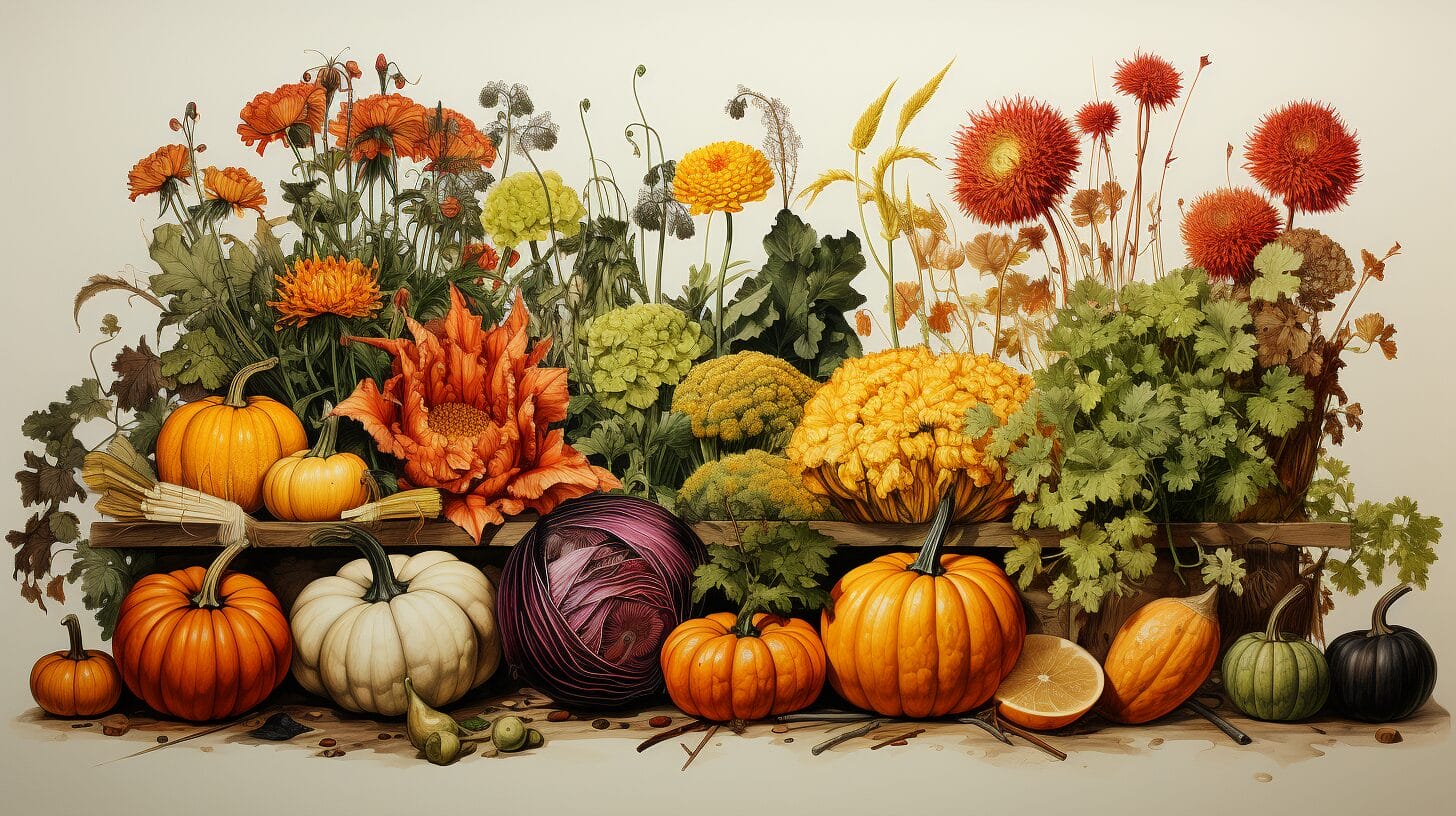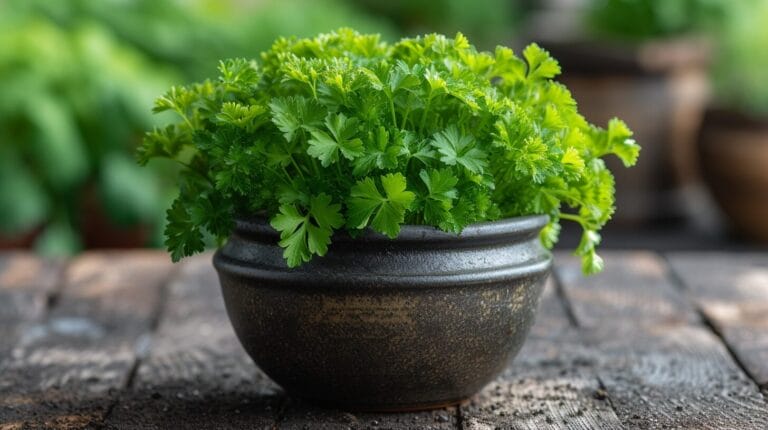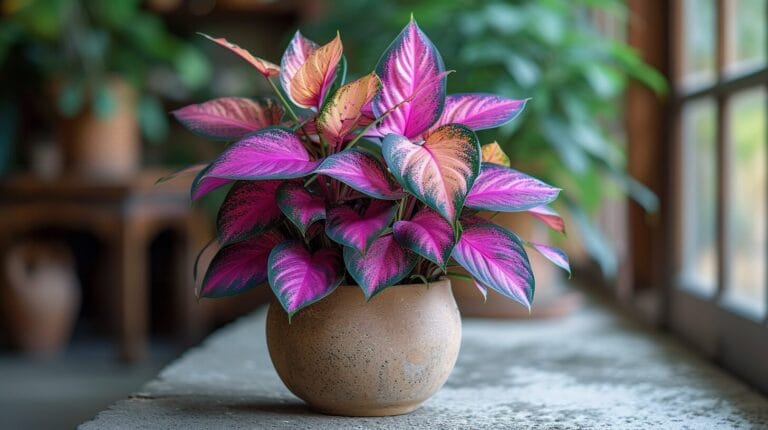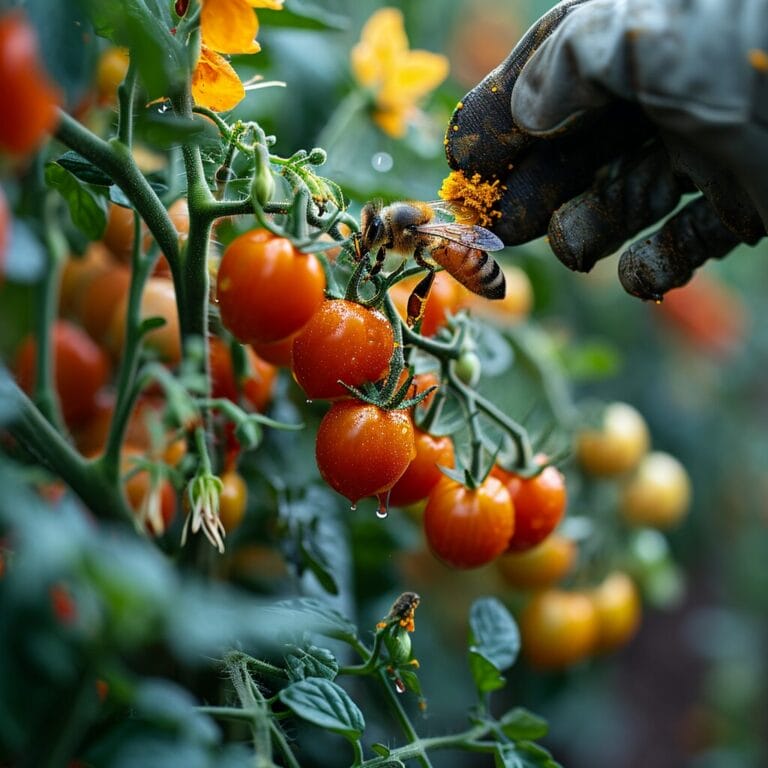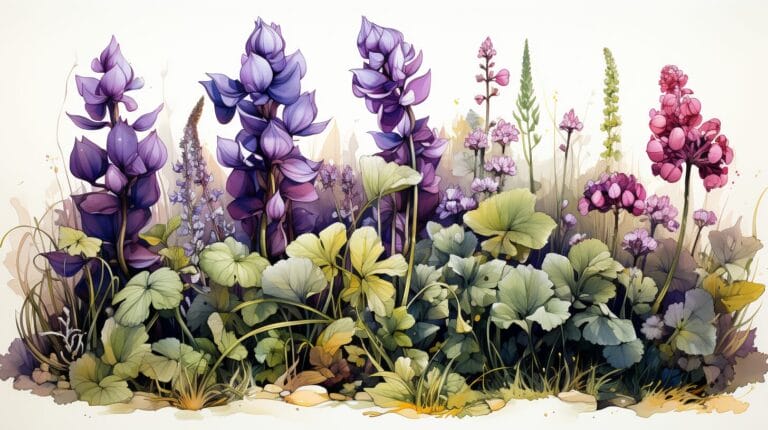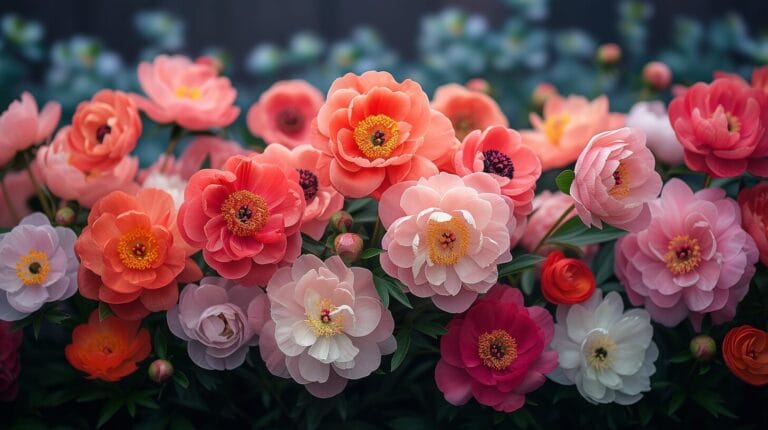Would it be correct to classify our beloved pumpkins as either annuals or perennials?
In our comprehensive guide, we’ll uncover the botanical classification of pumpkins and the implications this has for your gardening practices. We’ll guide you through the nuances of pumpkin growth, from seed selection to the final fruit, and equip you with the knowledge to nurture these plants for the most successful yield.
Key Takeaways
- Pumpkins are annual plants, completing their life cycle in one growing season and requiring replanting each year.
- Unlike perennials, pumpkins do not come back on their own and must be replanted.
- When planting and caring for pumpkins, it is important to select the suitable variety, plant after the danger of frost has passed, space the hills 6 feet apart, water and fertilize regularly, and use trellises for climbing varieties.
- To maximize pumpkin plant health, it is crucial to harvest at the right time, consider the local climate to prevent damage, fend off pests and diseases, provide adequate water, prune vines, and cure harvested pumpkins in a warm, dry place.
Understanding the Lifecycle of a Pumpkin Plant

While many gardeners revel in the autumnal bounty of pumpkins, understanding their natural lifecycle is crucial to successful cultivation, from the germination of seeds to the final harvest. Pumpkins are, in fact, annual vines.
This means they complete their life cycle in one growing season.
Here is the process:
- Planting – Seeds are sown in prepared garden soil
- Germination – Seeds sprout and seedlings emerge within 1-2 weeks
- Growth – Vines spread across the area, flowers bloom and get pollinated
- Fruiting – Pollinated flowers form small green pumpkins that swell over summer
- Maturing – Green skin changes to orange as pumpkins fully develop
- Harvesting – Fully grown pumpkins are picked in late summer or autumn
- Decaying – After harvesting, pumpkins will eventually break down and rot
- Reseeding – Seeds from decayed pumpkins create new plants, restarting the cycle
As annuals, they won’t return next year; we’ll need to plant new seeds each spring. But fear not; saving seeds from this year’s pumpkins is a simple way to ensure we’re ready for the next season’s garden.
The Annual vs. Perennial Question: Do Pumpkins Come Back Every Year?
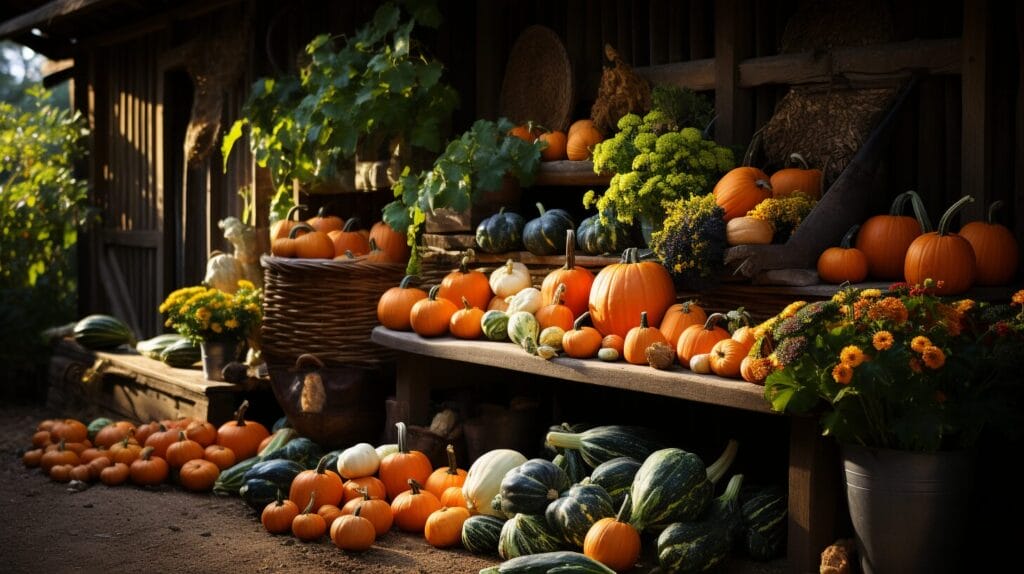
Pumpkins need to be replanted each year, unlike perennials which return season after season. This means that each spring, we must sow new pumpkin seeds or plant seedlings to enjoy their harvest in the fall. As annuals, their lifecycle completes within a single growing season, from seed to fruit to senescence.
We need to recognize that while the term ‘perennial vine’ may apply to some plants, it doesn’t apply to pumpkins. They’re not equipped to withstand freezing temperatures and will perish once the cold sets in. Each year, we’re presented with a clean slate to cultivate pumpkins, which also allows us to rotate crops and manage soil nutrients effectively.
Though they’re not back every year on their own, the annual planting of pumpkins is a cherished ritual for many gardeners, bringing the joy of harvest each autumn.
How to Successfully Plant and Care for Pumpkins
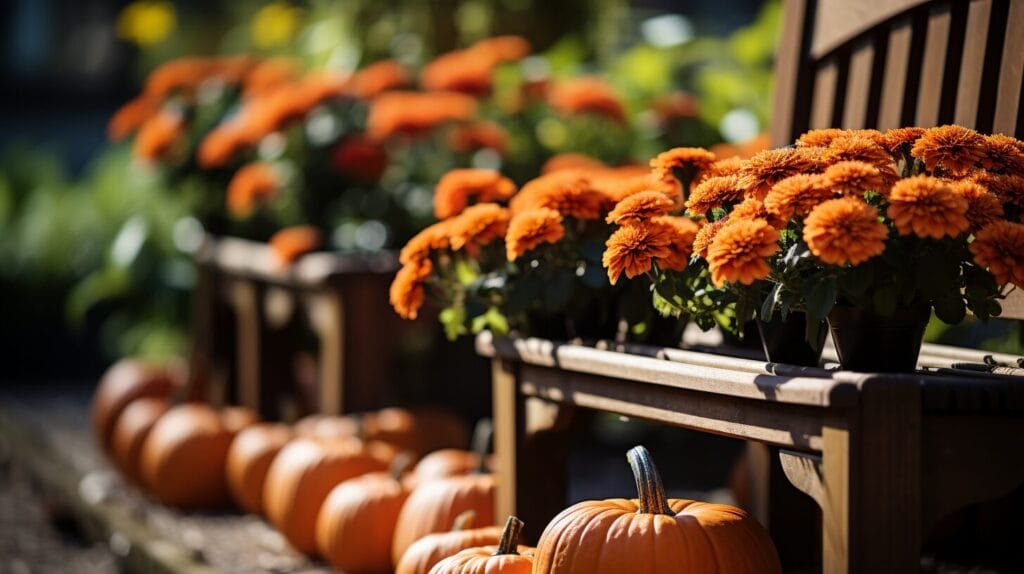
Selecting a suitable variety of pumpkin is the first step to ensure a bountiful harvest come autumn. Pumpkins are sun-loving, fast-growing vines that grow best in warm soil, so we’ll plant them after the danger of frost has passed and when the soil has warmed up.
Here’s a simple guide to pumpkin care:
- Planting: Sow seeds directly into the ground, spacing hills 6 feet apart.
- Care: Water and fertilize regularly, avoiding wetting leaves to prevent disease.
- Support: Use trellises for climbing varieties to save space and keep fruit clean.
- Pruning: Prune vines to improve air circulation, focusing on diseased or excess growth.
- Harvest: Pick when the rind is hard, before the first frost.
As our pumpkins grow, we’ll ensure they receive plenty of water, especially during dry spells. We must also be vigilant about pests and diseases that could harm our plants.
Key Considerations for the Harvesting Process
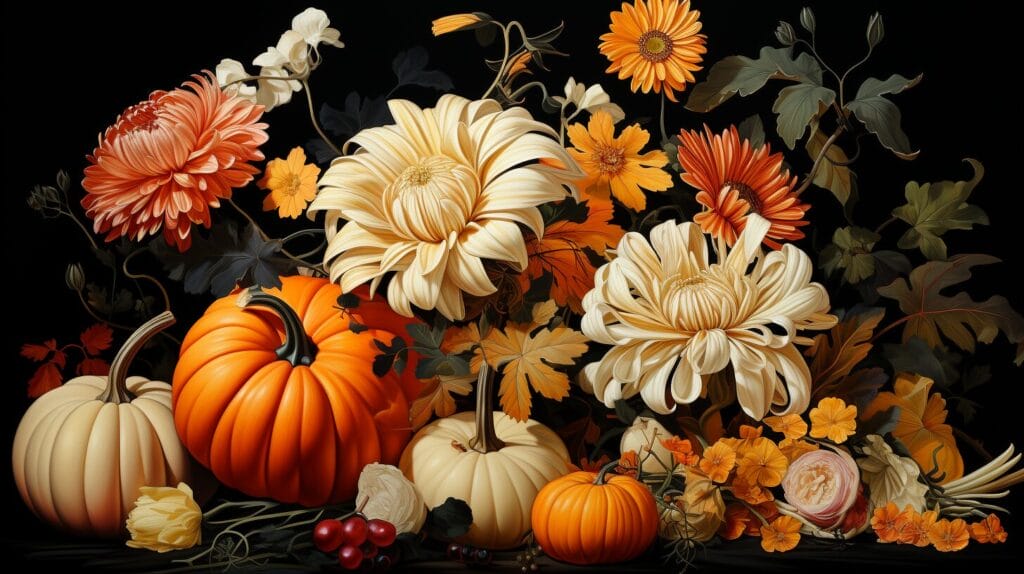
Knowing when to harvest pumpkins is crucial for ensuring the fruits have reached their peak maturity and flavor. There are key considerations we must take into account to ensure we’re doing it right:
- Color: A mature pumpkin will have a deep, solid color.
- Sound: A hollow sound when tapped indicates ripeness.
- Rind: The rind should be hard enough to resist puncture when pressed with a fingernail.
- Vine: When the vine begins to wither and the stem hardens, it’s usually time to harvest.
We carefully time the harvesting process. Harvesting too early can lead to pumpkins that lack flavor and may not store well, while waiting too long can result in overripe fruits prone to rotting.
Overcoming Challenges and Maximizing Pumpkin Plant Health
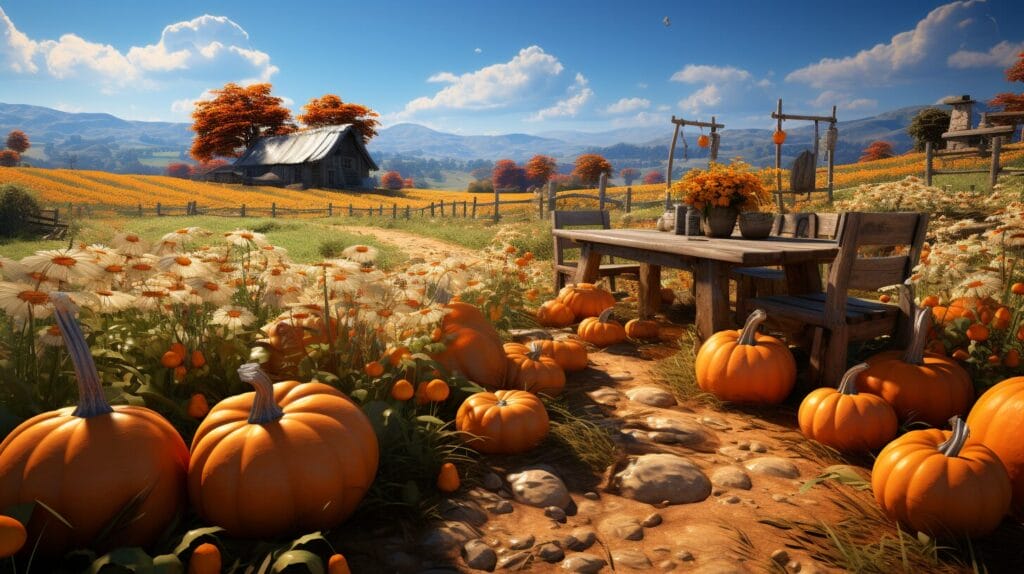
Fending off common pests, we ensure our pumpkin plants remain robust and productive. To combat common foes that threaten our pumpkin’s health, we follow these solutions:
- Pests: Introduce beneficial insects or use organic pesticides.
- Disease: Ensure good air circulation and practice crop rotation.
- Poor Growth: Use compost to enrich soil and ensure proper watering.
By following these practices, we improve the health of our pumpkins and the biodiversity of our gardens.
Conclusion
Pumpkins are indeed annuals, gracing our gardens just once a year. With proper planting and care, our pumpkin patches can thrive each season. By mastering the harvest and tackling challenges head-on, we ensure a yearly bounty of these beloved gourds.
Let’s embrace the cycle, from seed to splendor, and keep the pumpkin magic alive in our gardens every year.
Happy growing!
Frequently Asked Questions
How do I start to grow pumpkins?
Pumpkin seeds can be planted directly in the garden or started indoors. Make sure you plant pumpkins after the last frost and choose a location with full sun. Young pumpkins require ample room to grow, around a space of 5 feet per plant, and a soil pH between 6.0 and 7.0.
What is the difference between pumpkins and squash?
Pumpkins and squash are relatives in the same plant family, but they do have some distinct differences. The major one is the appearance – pumpkins are usually round and orange, while squash can come in a range of shapes, sizes, and colors. Also, pumpkin varieties are typically used for autumn decorations and pie making, whereas, squash varieties, such as winter squash, are used more frequently in cooking.
When is the optimal time to sow and germinate pumpkin seeds?
Depending on the variety, pumpkin seeds should be sown after the last frost date in your area. The soil temperature for germination of pumpkin seeds should be between 70 and 90 degrees Fahrenheit. Typically, pumpkins take between 90 and 120 days to mature.
How often should I fertilize my pumpkin plants?
Pumpkin plants are very heavy feeders, so they need a lot of nutrients. You should fertilize them regularly with a high nitrogen fertilizer until flowers form, then switch to a high phosphorous and potassium fertilizer.
Are pumpkins annuals or perennials kind of plants?
Pumpkins are usually grown as annual plants, meaning they complete their entire life cycle from seed to plant to producing and dying off, in one growing season.

